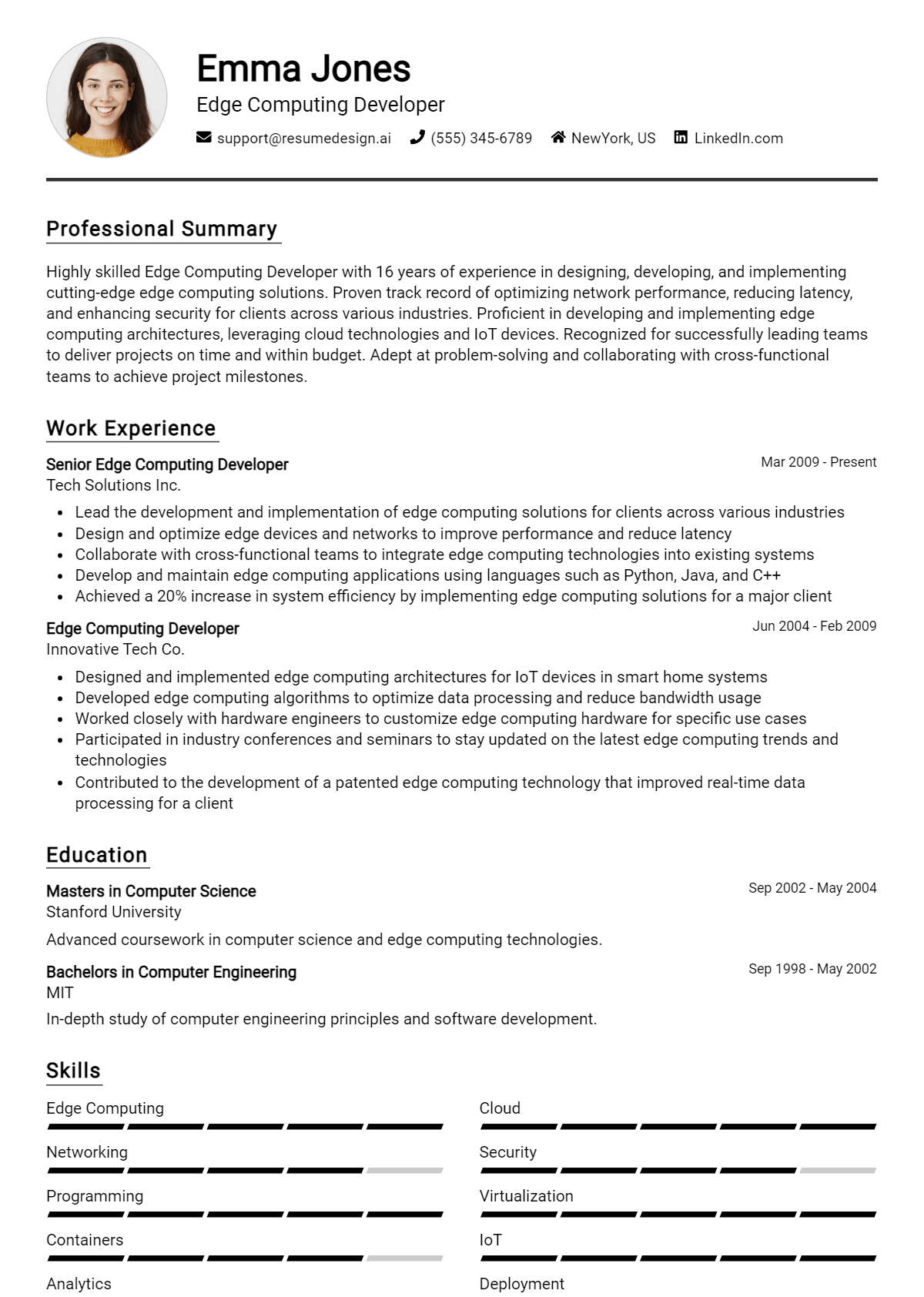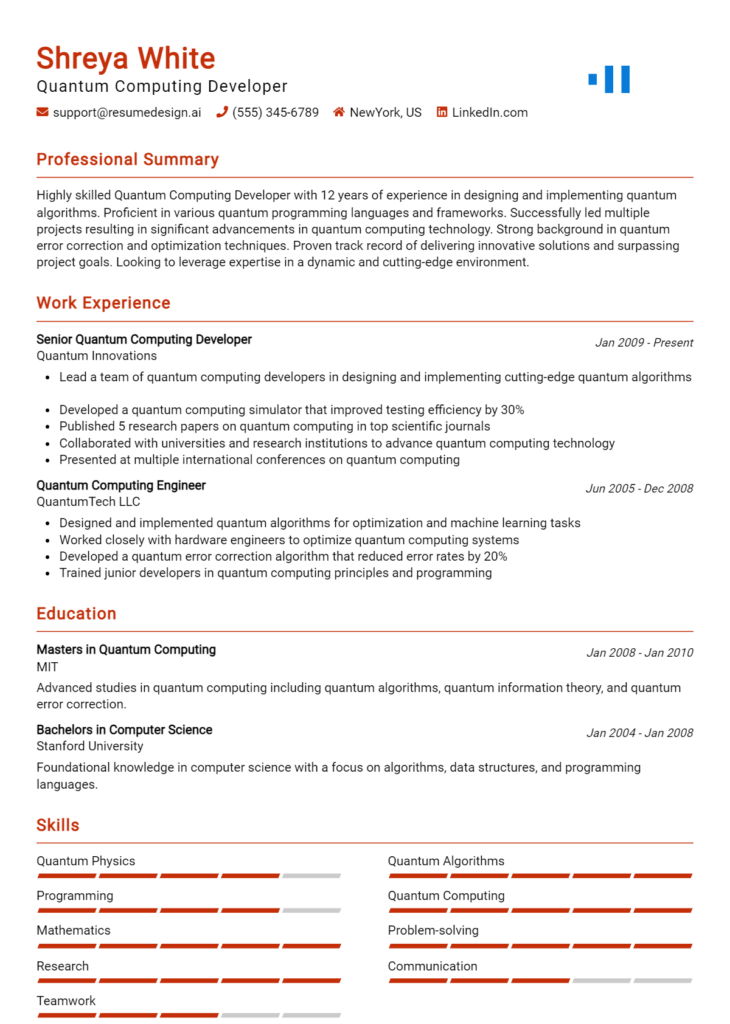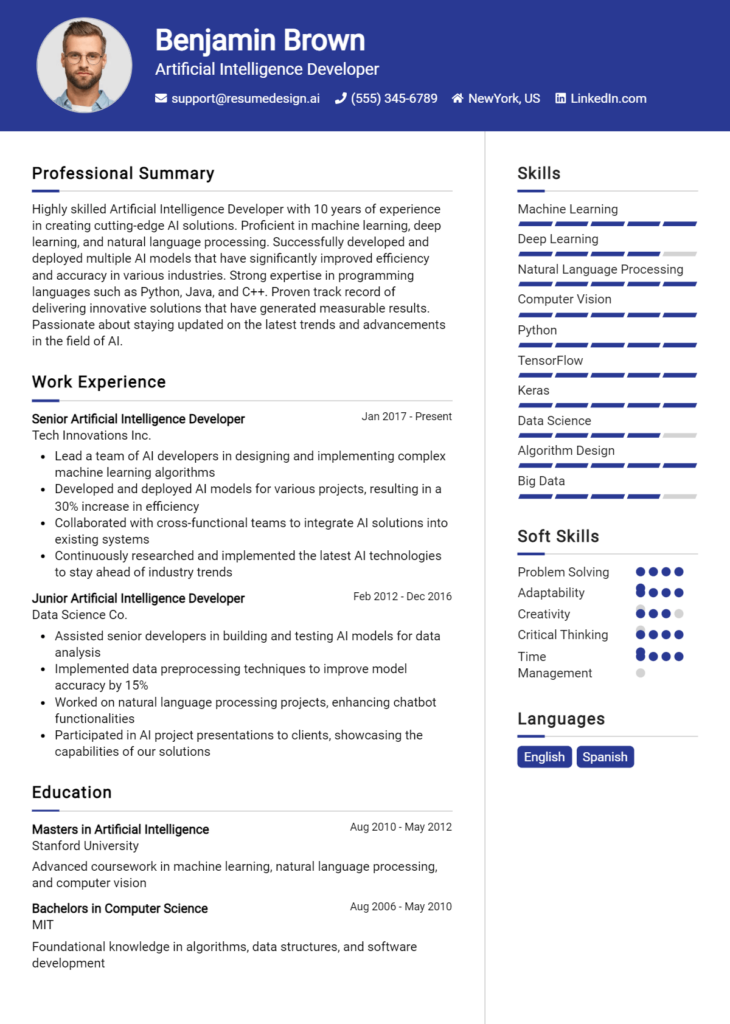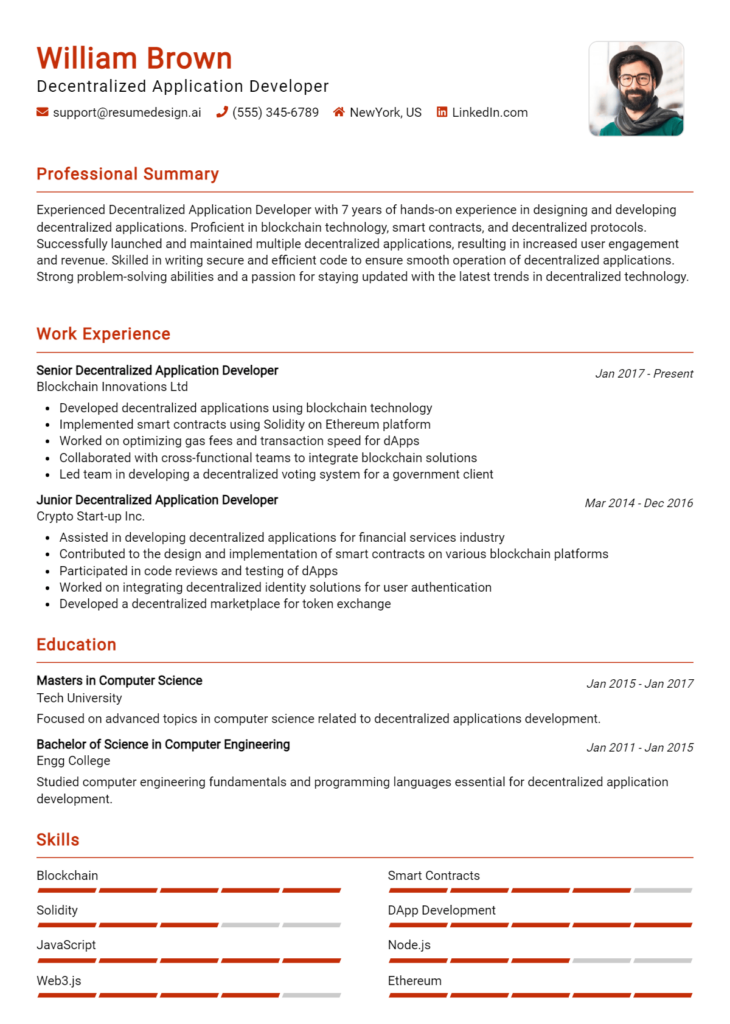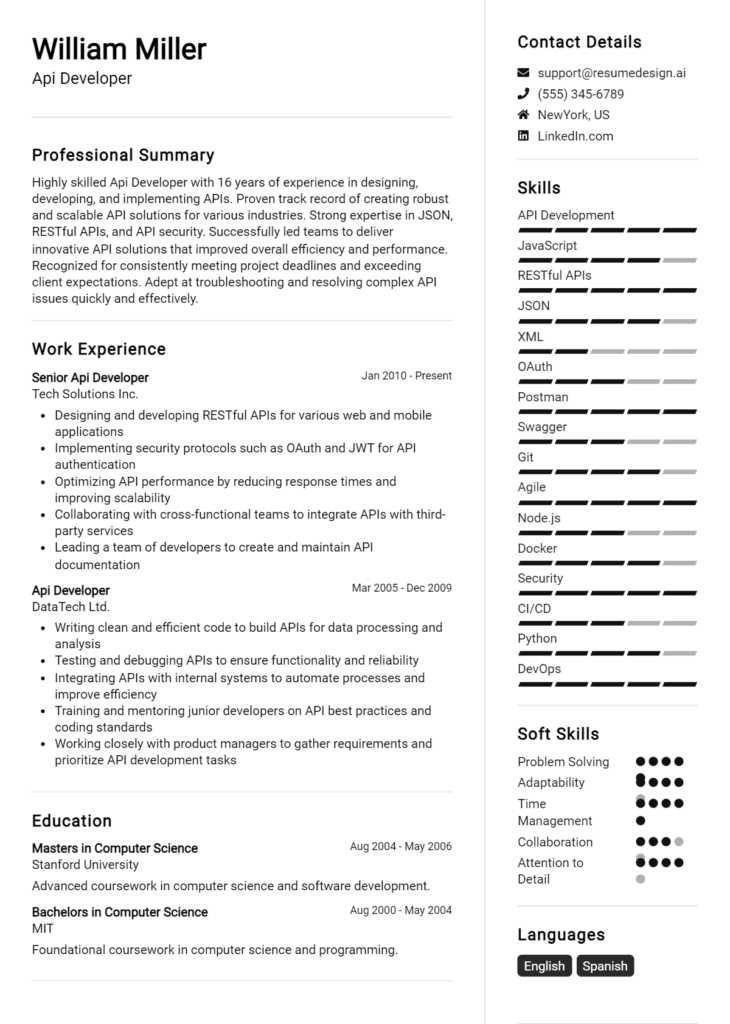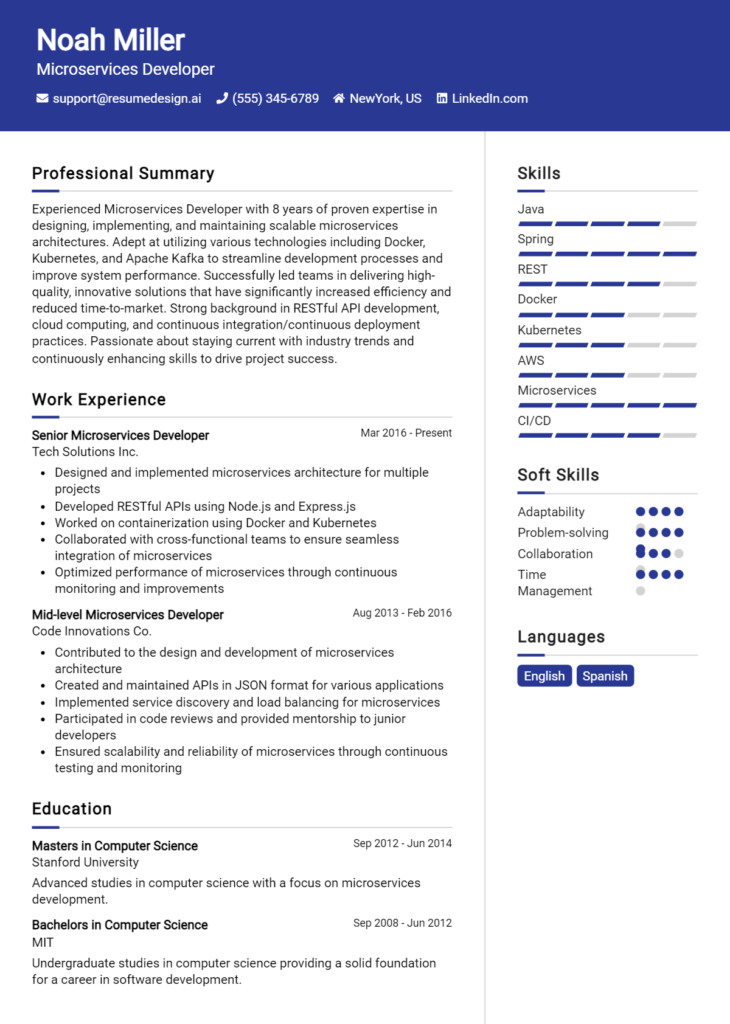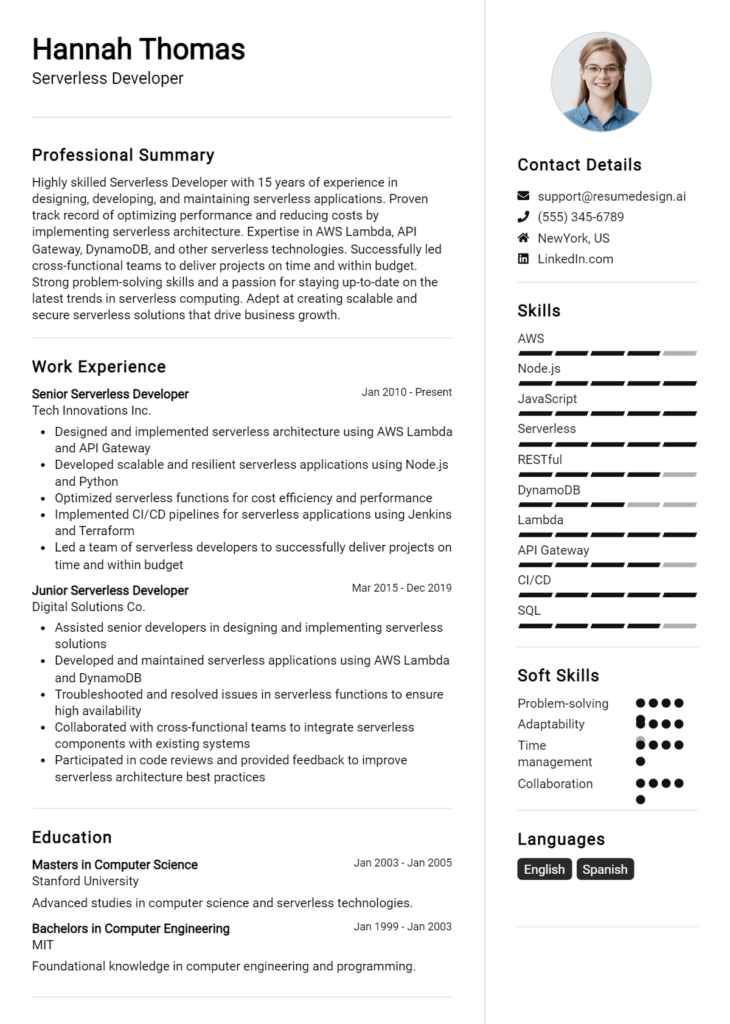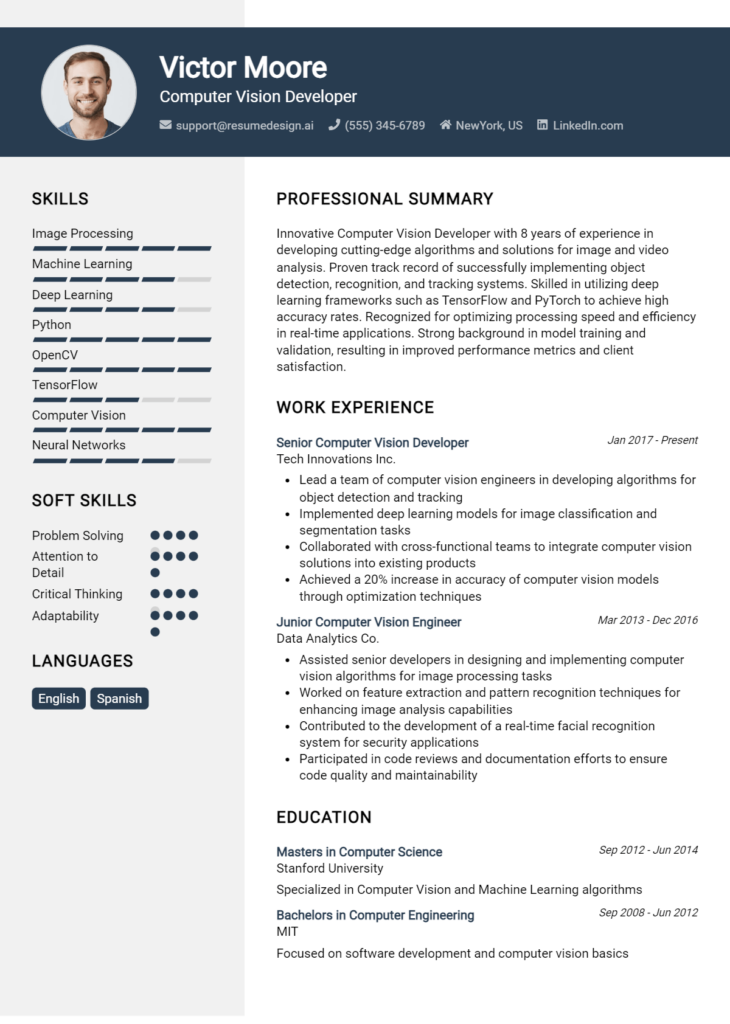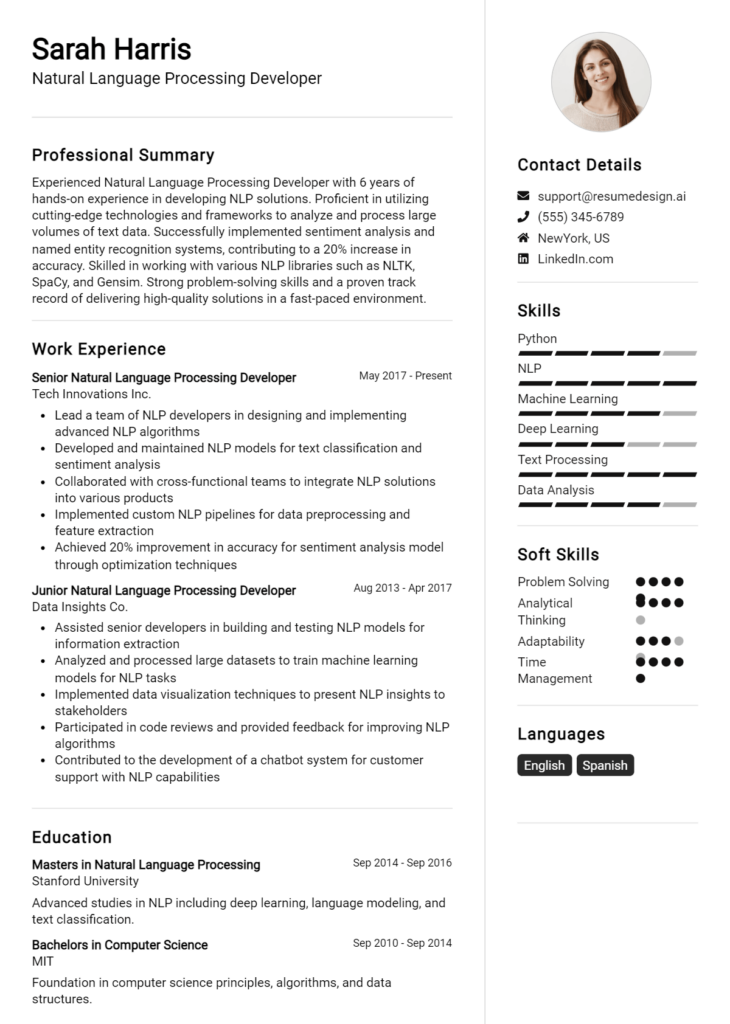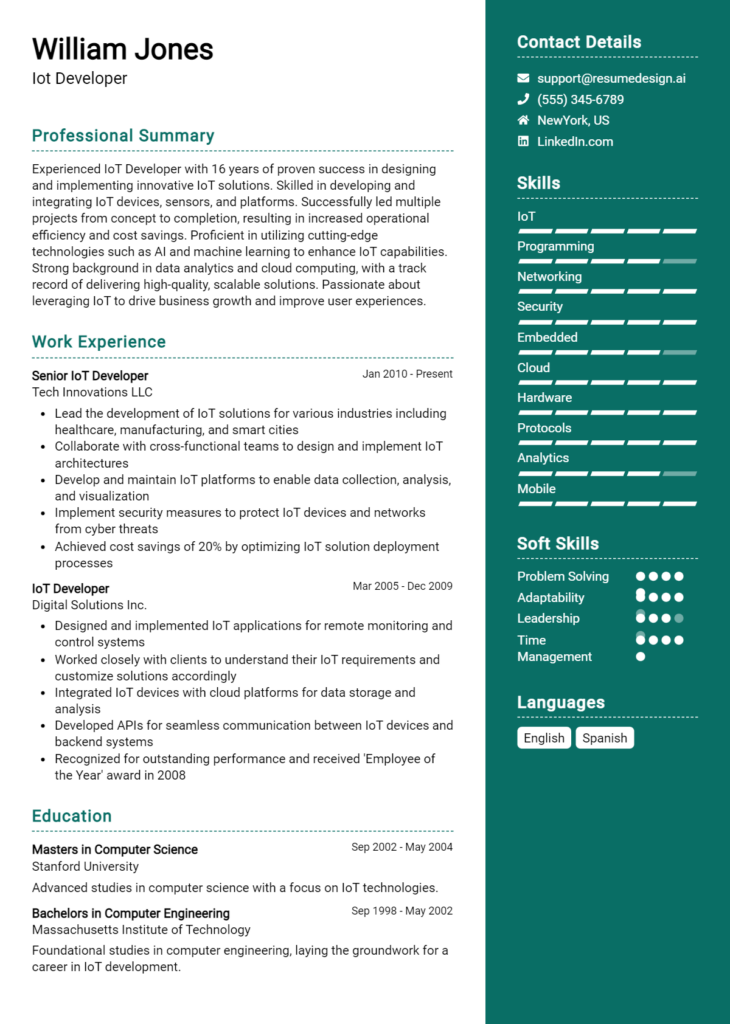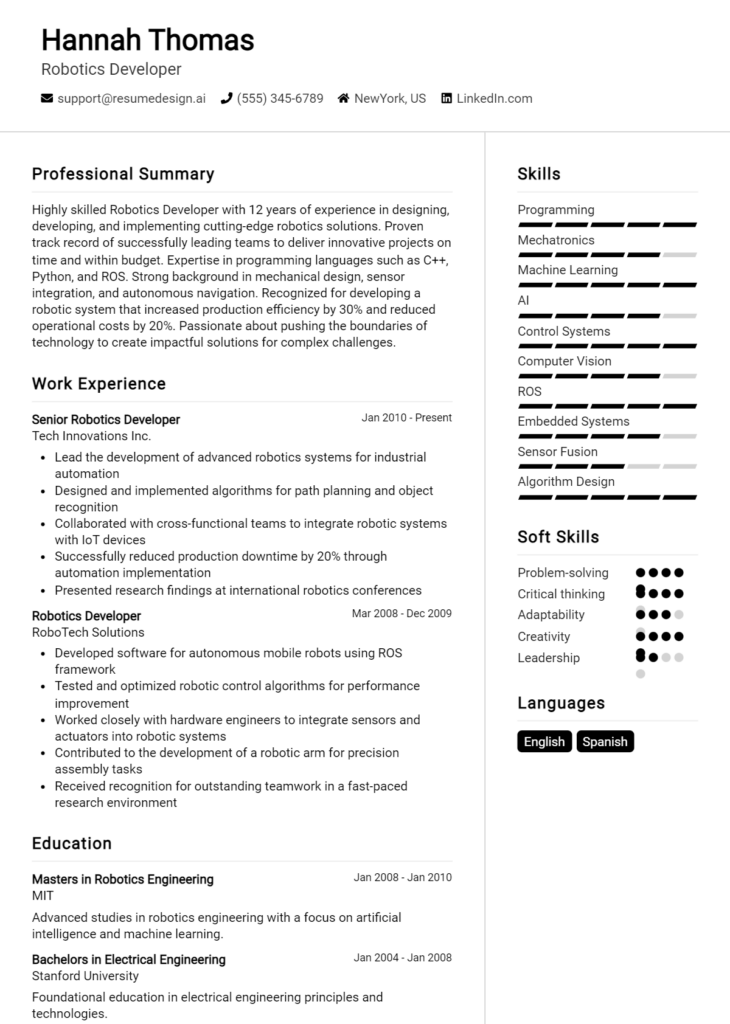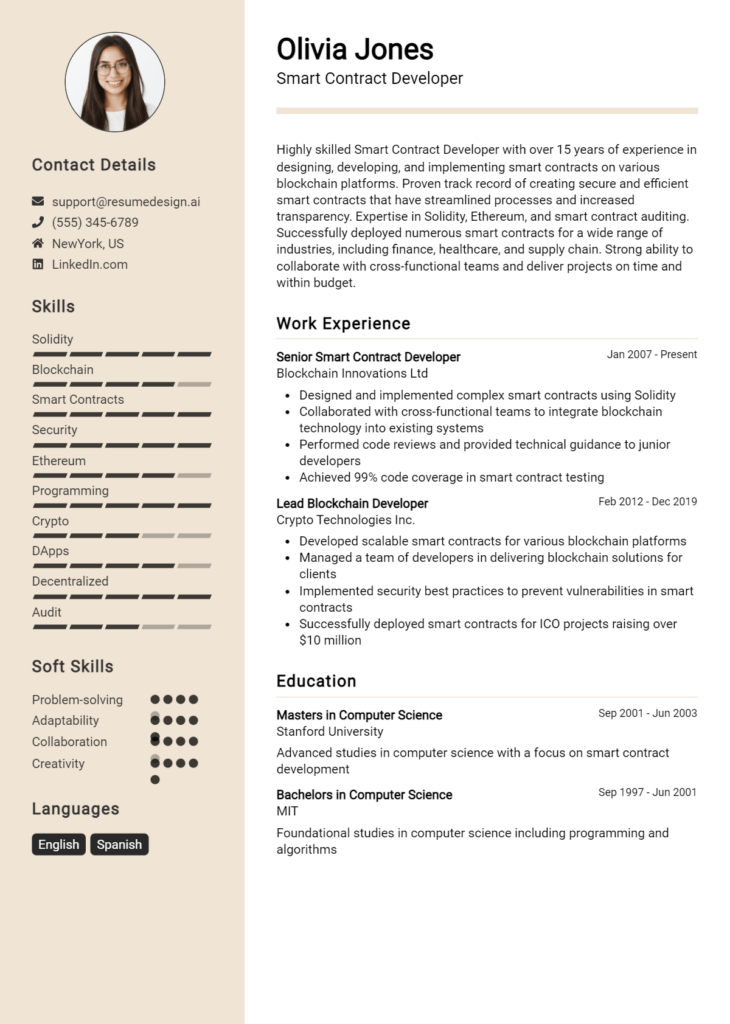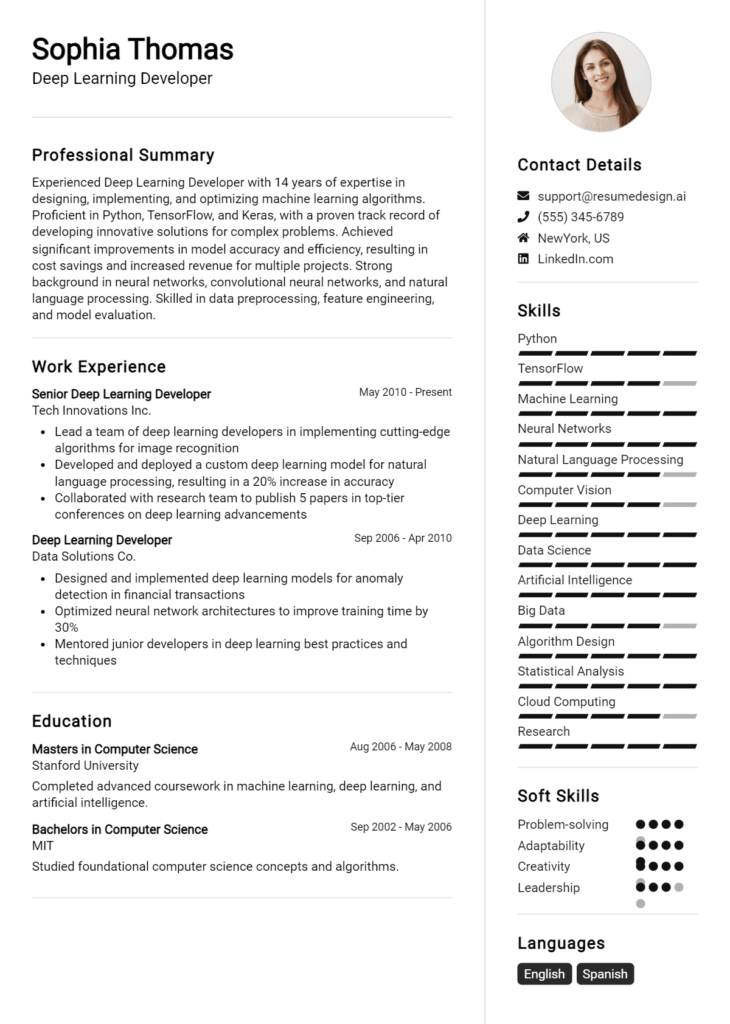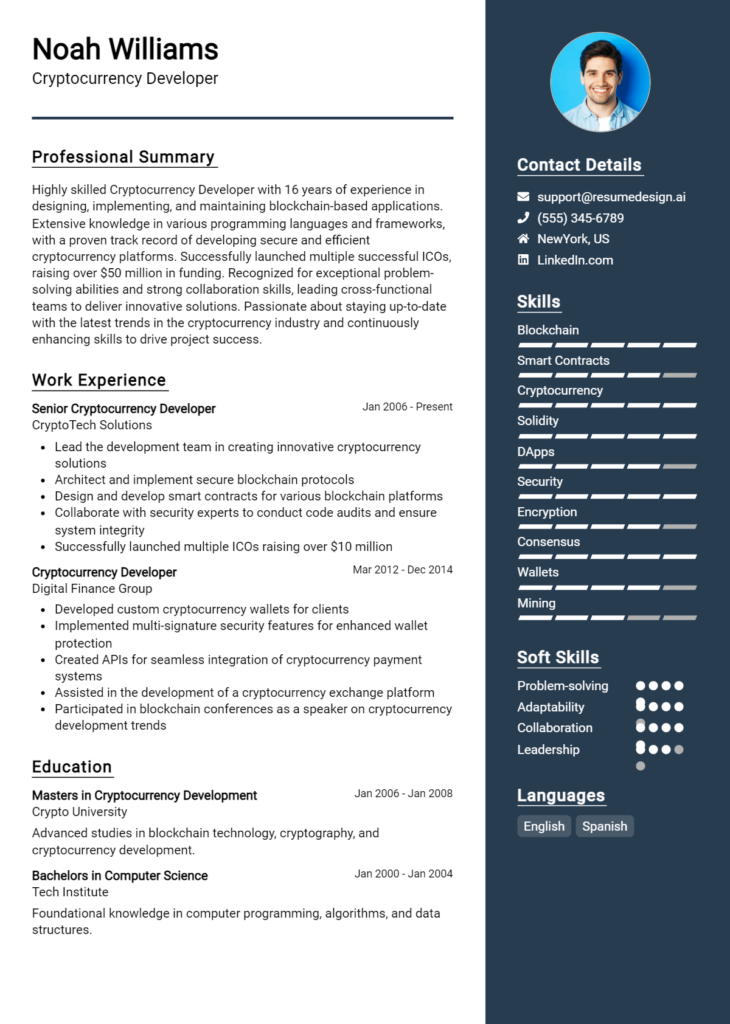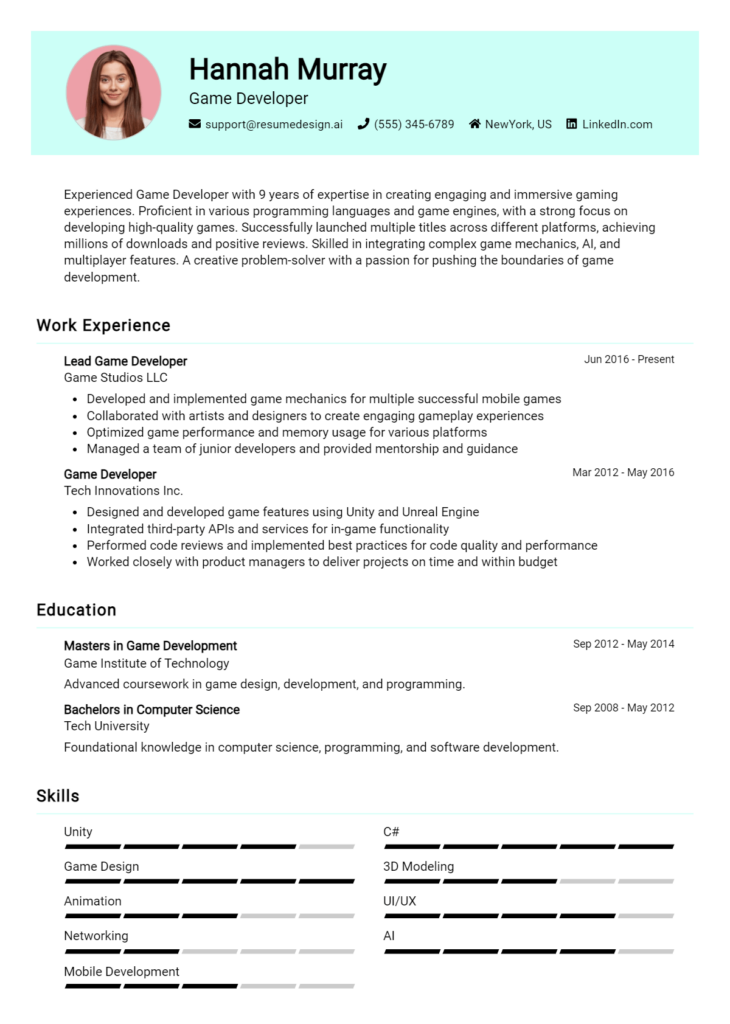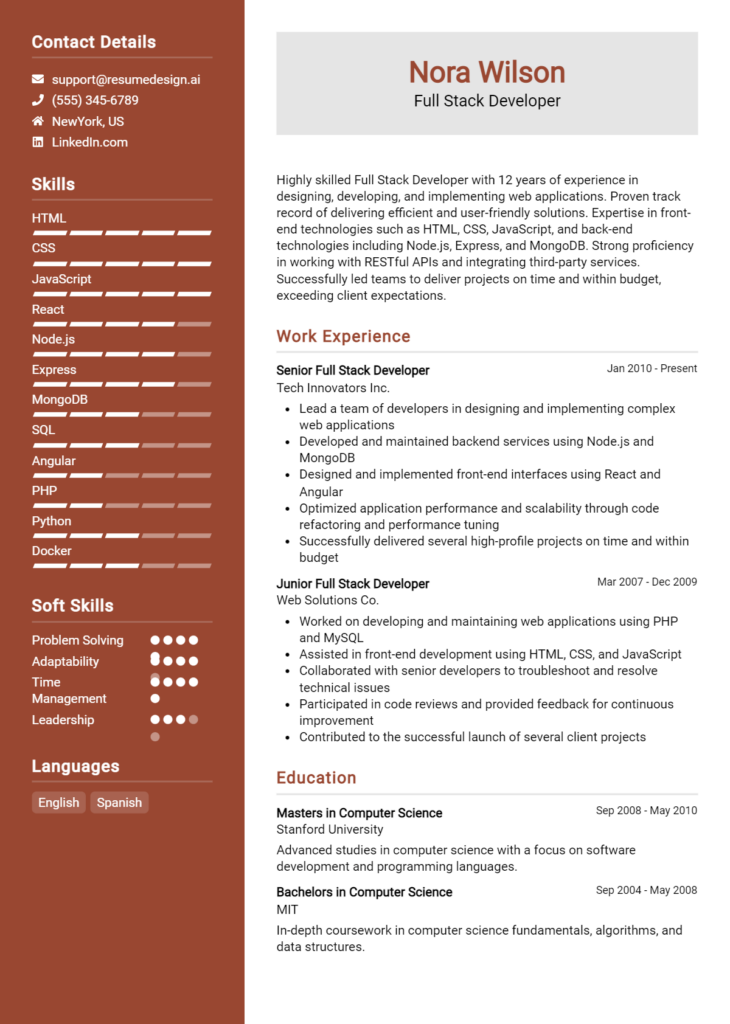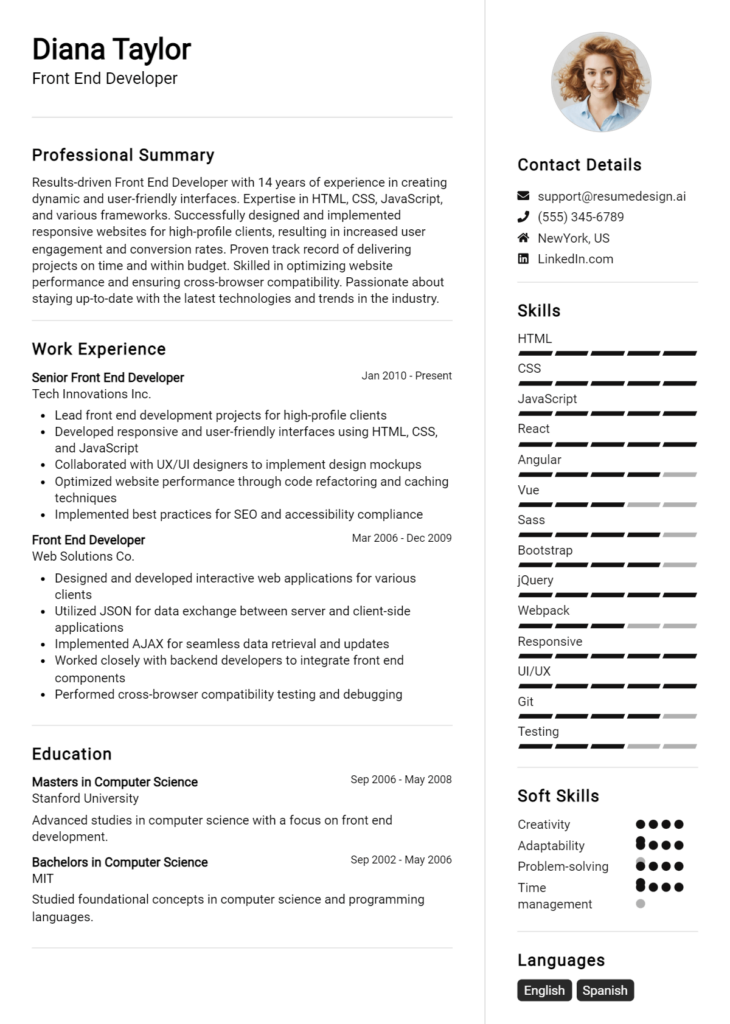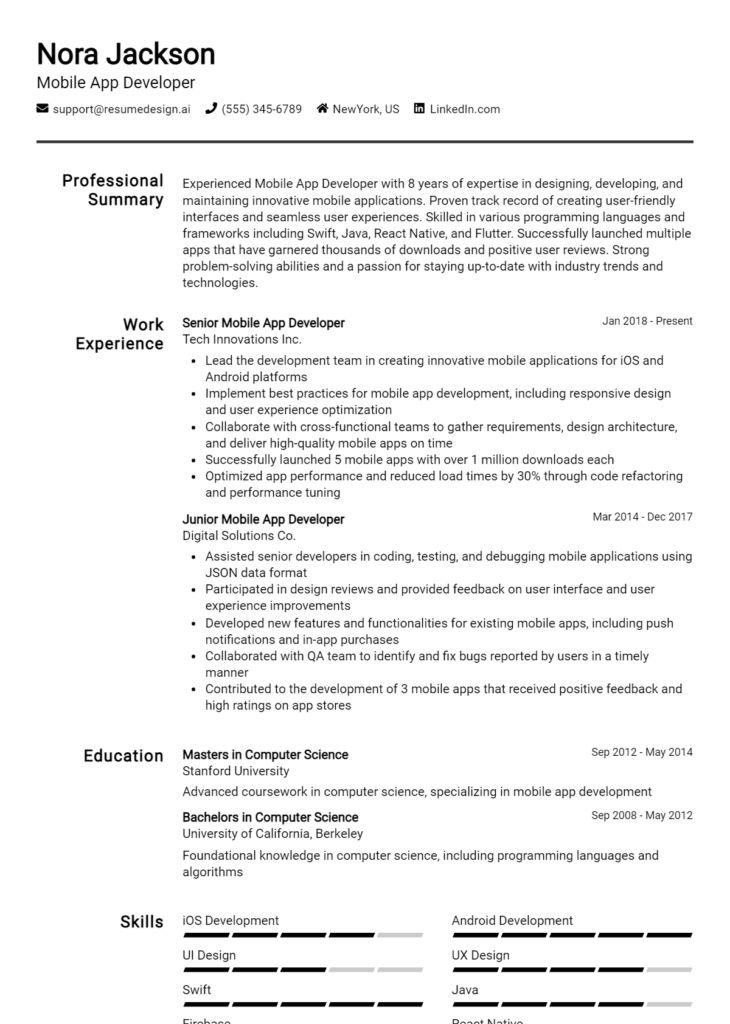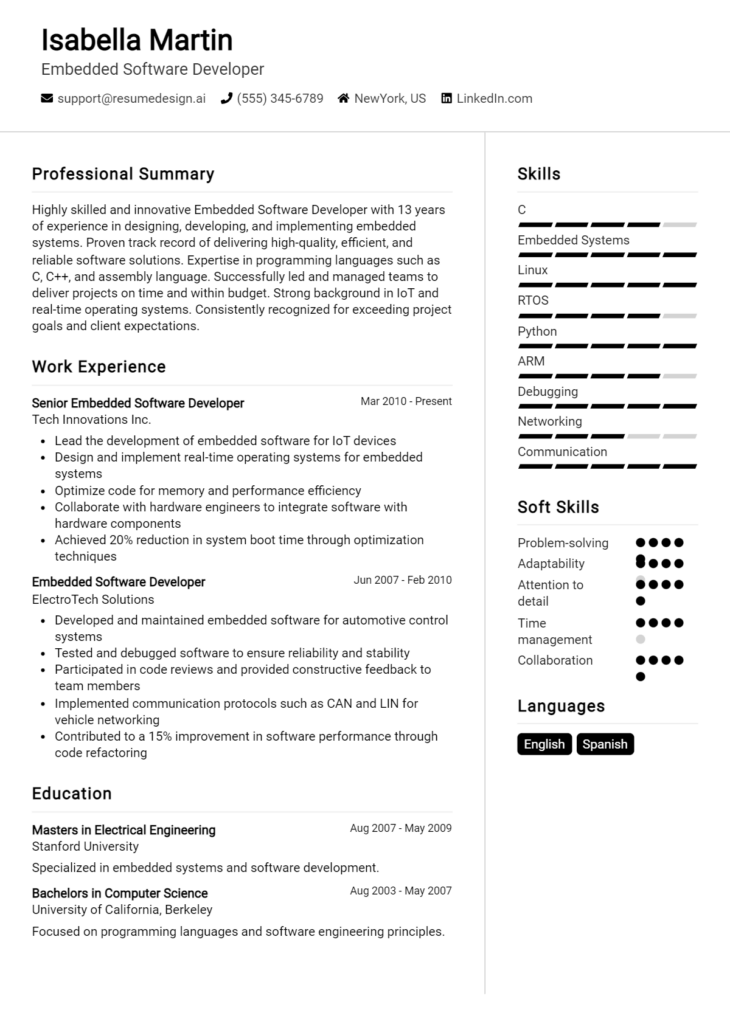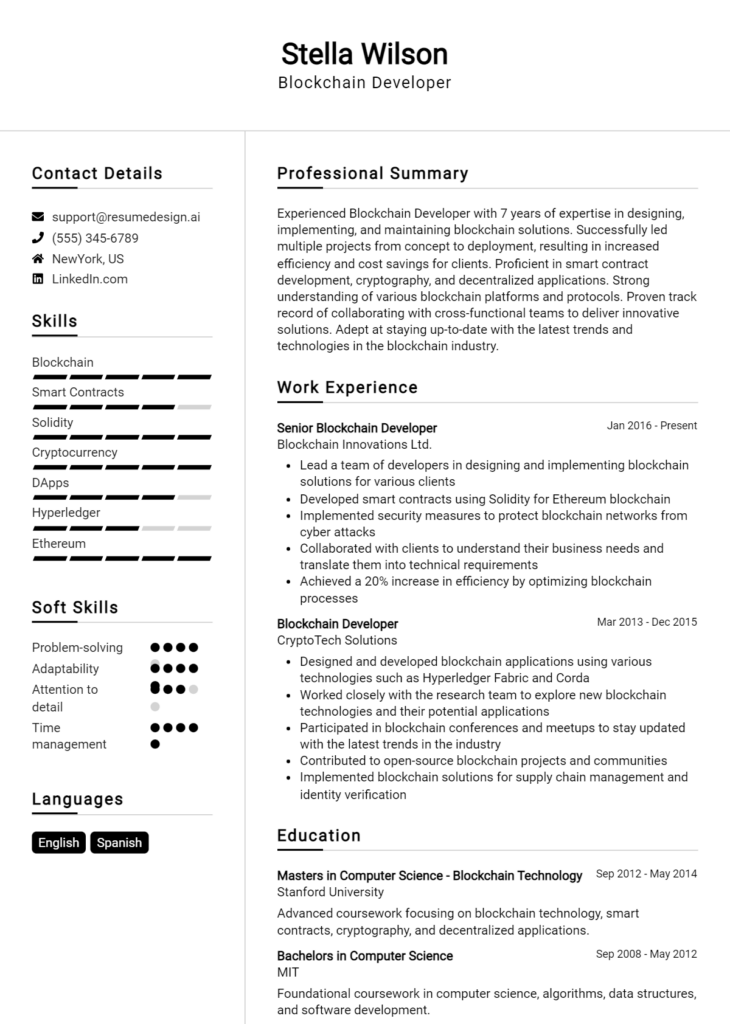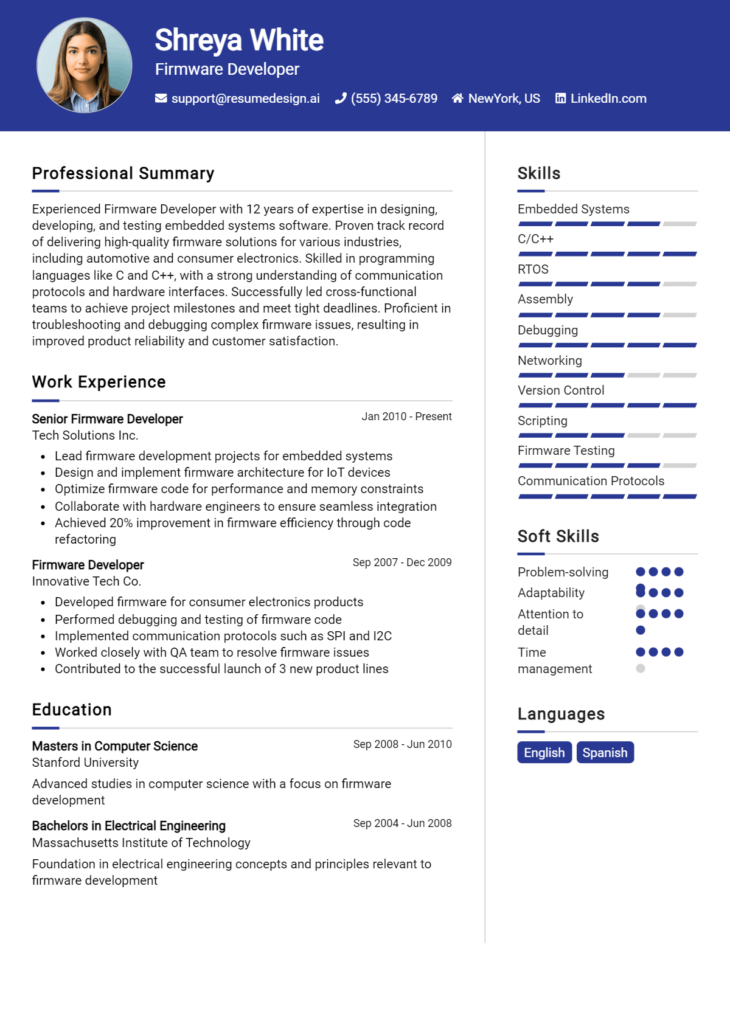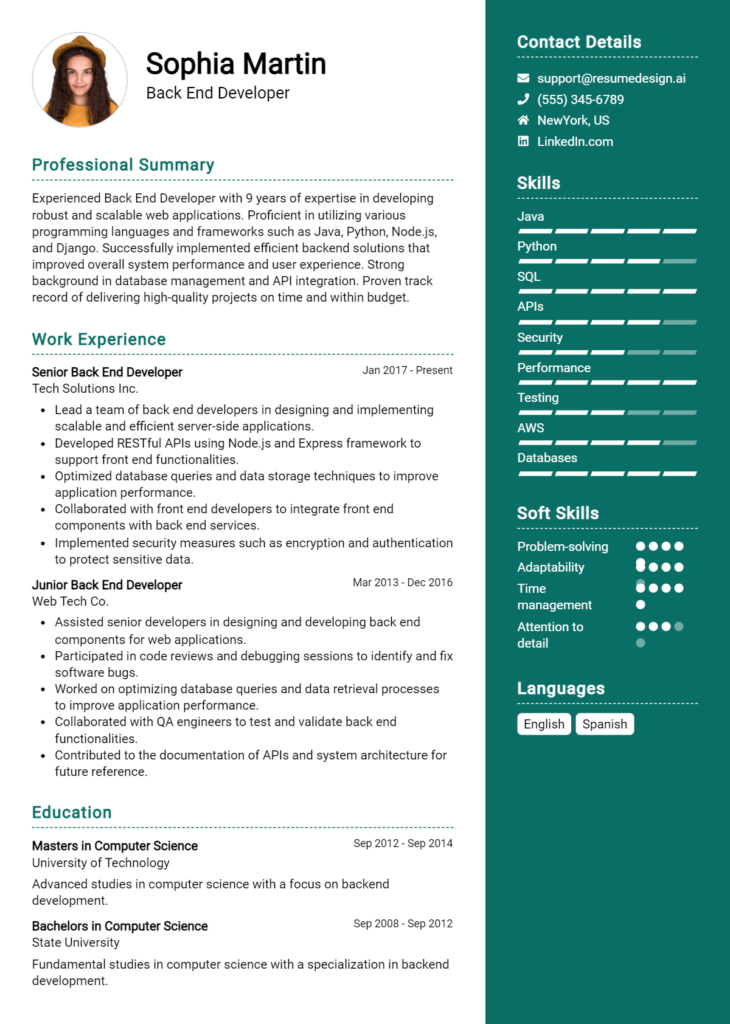Edge Computing Developer Core Responsibilities
An Edge Computing Developer plays a crucial role in enhancing data processing efficiency by working at the intersection of IT and operational technology. Their core responsibilities include designing, deploying, and managing edge computing solutions that improve real-time data analysis and reduce latency. Essential skills encompass technical expertise in cloud services, network configuration, and IoT integration, alongside strong problem-solving and operational capabilities. By effectively showcasing these qualifications in a well-structured resume, candidates can significantly contribute to their organization’s strategic goals and foster collaboration across various departments.
Common Responsibilities Listed on Edge Computing Developer Resume
- Design and implement edge computing architectures.
- Optimize data processing and storage solutions at the edge.
- Integrate IoT devices and platforms for seamless data flow.
- Conduct performance tuning and troubleshooting of edge applications.
- Collaborate with cross-functional teams to ensure alignment on projects.
- Develop and maintain documentation for edge computing processes.
- Monitor and analyze edge computing performance metrics.
- Implement security measures for edge devices and networks.
- Stay updated on emerging edge computing technologies and trends.
- Provide technical support and training to other departments.
- Participate in strategic planning for edge deployment initiatives.
High-Level Resume Tips for Edge Computing Developer Professionals
In the fast-evolving landscape of technology, a well-crafted resume is essential for Edge Computing Developer professionals looking to make a stellar first impression on potential employers. Your resume serves as the gateway to your career, showcasing not just your technical skills and experiences, but also your unique accomplishments and contributions in the field. With the growing demand for edge computing solutions, it is crucial that your resume effectively reflects your expertise in this niche area. This guide will provide practical and actionable resume tips specifically tailored for Edge Computing Developer professionals, ensuring you stand out in the competitive job market.
Top Resume Tips for Edge Computing Developer Professionals
- Tailor your resume to match the specific job description, using keywords from the posting to highlight relevant skills.
- Showcase your experience with edge computing technologies such as IoT, cloud computing, and real-time data processing.
- Quantify your achievements with metrics, such as reduced latency times or improved processing speeds, to demonstrate your impact.
- Highlight relevant certifications or coursework in edge computing, cloud platforms, and programming languages.
- Include examples of projects where you implemented edge computing solutions, detailing your role and the technologies used.
- Emphasize collaboration skills, as edge computing often involves working with cross-functional teams and stakeholders.
- Utilize a clean, professional layout that enhances readability and draws attention to key sections of your resume.
- Keep your resume concise, ideally one page, focusing on the most relevant and recent experiences.
- Add a summary statement at the top of your resume that captures your career goals and your passion for edge computing.
- Regularly update your resume to reflect new skills, projects, and advancements in the edge computing field.
By implementing these tips, you can significantly increase your chances of landing a job in the Edge Computing Developer field. A targeted, well-structured resume not only highlights your strengths but also demonstrates your commitment to the industry, making you a more attractive candidate to potential employers.
Why Resume Headlines & Titles are Important for Edge Computing Developer
In the competitive landscape of edge computing, the role of an Edge Computing Developer is both vital and specialized. Crafting an impressive resume is crucial for candidates vying for this position, and one of the key components of an effective resume is the headline or title. A strong headline or title serves as the first impression for hiring managers, encapsulating the candidate's key qualifications in a concise and engaging way. It should immediately grab attention, provide insight into the applicant's expertise, and set the stage for the rest of the resume. Therefore, it is essential that the headline is not only relevant and role-specific but also succinctly communicates the candidate's value to potential employers.
Best Practices for Crafting Resume Headlines for Edge Computing Developer
- Keep it concise: Aim for a headline that is clear and to the point, ideally no more than 10-12 words.
- Be role-specific: Tailor your headline to reflect the specific job title you are applying for.
- Highlight key skills: Incorporate essential skills or technologies that are relevant to edge computing.
- Showcase experience: If applicable, mention years of experience to convey depth of knowledge.
- Use impactful language: Choose strong, action-oriented words that convey confidence and expertise.
- Include certifications: If you have relevant certifications, consider including them in your headline.
- Avoid jargon: Use clear language that is easily understood by hiring managers and ATS systems.
- Revise for clarity: Ensure that your headline accurately reflects your qualifications and is free of any ambiguity.
Example Resume Headlines for Edge Computing Developer
Strong Resume Headlines
"Innovative Edge Computing Developer with 5+ Years in IoT Solutions."
“Experienced Edge Systems Architect Specializing in Real-Time Data Processing.”
“Certified Edge Computing Engineer with Expertise in Cloud Integration and Security.”
“Proficient Edge Developer Focused on Enhancing Network Efficiency and Performance.”
Weak Resume Headlines
“Looking for a Job in Technology.”
“Edge Computing Developer with Some Experience.”
The strong headlines are effective because they convey specific qualifications and achievements related to edge computing, instantly establishing the candidate's relevance to the role. They use precise language to highlight skills and experiences that are critical in this niche area, which can resonate with hiring managers. In contrast, the weak headlines fail to impress due to their vagueness and lack of specificity. They do not provide meaningful information about the candidate’s qualifications or expertise and may be overlooked in favor of more impactful statements.
Writing an Exceptional Edge Computing Developer Resume Summary
Writing a compelling resume summary is crucial for Edge Computing Developers looking to make a strong impression on potential employers. A well-crafted summary serves as an elevator pitch, quickly capturing the attention of hiring managers by succinctly showcasing key skills, relevant experience, and notable accomplishments in the field of edge computing. It should be concise, impactful, and tailored specifically to the job that the candidate is applying for, ensuring that it highlights their unique qualifications and suitability for the role.
Best Practices for Writing an Edge Computing Developer Resume Summary
- Quantify Achievements: Use numbers and statistics to demonstrate your impact and contributions effectively.
- Focus on Relevant Skills: Highlight technical skills and expertise that align directly with the job description.
- Tailor the Summary: Customize your summary for each job application to reflect the specific requirements and keywords from the job posting.
- Be Concise: Aim for 2-4 sentences that deliver maximum information in a succinct manner.
- Use Action Verbs: Start sentences with strong action verbs to convey a sense of proactivity and achievement.
- Showcase Certifications: Mention any relevant certifications or training that enhance your qualifications.
- Include Industry Terminology: Use terms and jargon that reflect your familiarity with the edge computing field.
- Demonstrate Problem-Solving Skills: Highlight your ability to solve complex problems, a crucial aspect of edge computing development.
Example Edge Computing Developer Resume Summaries
Strong Resume Summaries
Dynamic Edge Computing Developer with over 5 years of experience in optimizing IoT solutions, resulting in a 30% increase in system efficiency. Proficient in AWS Greengrass and Microsoft Azure IoT, with a strong background in machine learning algorithms and data analytics.
Results-driven Edge Computing Specialist with expertise in deploying scalable applications across distributed networks, achieving a 40% reduction in latency for real-time data processing. Skilled in Docker, Kubernetes, and edge analytics, dedicated to enhancing user experiences.
Innovative Edge Computing Engineer with a track record of improving application performance by 25% through effective edge node management. Holds certifications in AWS Certified Solutions Architect and Google Cloud Professional Cloud Architect.
Experienced Edge Computing Developer focused on enhancing security frameworks for IoT devices, successfully decreasing vulnerability incidents by 50%. Well-versed in Python, Java, and edge device integration.
Weak Resume Summaries
Edge Computing Developer with some experience in the tech industry. Good at working with various technologies.
A motivated individual seeking to apply skills in edge computing development. Familiar with programming languages and cloud services.
The examples provided illustrate the distinction between strong and weak resume summaries. Strong summaries are specific, quantifiable, and directly relevant to the edge computing field, showcasing accomplishments and technical skills. In contrast, weak summaries lack detail, fail to highlight significant achievements, and come across as generic and unfocused, making it difficult for hiring managers to gauge the candidate's qualifications. A compelling summary is essential for standing out in a competitive job market.
Work Experience Section for Edge Computing Developer Resume
The work experience section of an Edge Computing Developer resume is critical as it provides a comprehensive overview of the candidate's technical skills, leadership capabilities, and ability to deliver high-quality products. This section serves as a testament to a developer's proficiency in edge computing technologies and methodologies, showcasing how they have successfully managed projects and collaborated with teams to achieve tangible results. Quantifying achievements, such as performance improvements, cost savings, or successful project deliveries, not only enhances credibility but also aligns the candidate's experience with industry standards, making them more appealing to potential employers.
Best Practices for Edge Computing Developer Work Experience
- Highlight relevant technical skills such as IoT integration, cloud computing, and data analytics.
- Quantify achievements using metrics like performance improvements, uptime percentages, and cost reductions.
- Emphasize collaboration and teamwork by detailing cross-functional projects and partnerships.
- Detail leadership roles, including team management, project ownership, and mentoring responsibilities.
- Align experiences with industry standards and requirements to demonstrate relevance.
- Use action verbs to communicate impact and contributions effectively.
- Focus on problem-solving skills by showcasing how challenges were addressed and resolved.
- Include any relevant certifications or training that enhance your technical expertise.
Example Work Experiences for Edge Computing Developer
Strong Experiences
- Led a team of 5 developers to design and implement an edge computing solution that reduced data latency by 30%, improving real-time analytics capabilities for a major retail client.
- Architected a scalable IoT framework that enabled seamless device integration, resulting in a 25% increase in system efficiency and a 15% reduction in operational costs.
- Collaborated with cross-functional teams to develop a secure edge computing application that achieved 99.9% uptime, enhancing customer satisfaction by 40%.
- Managed a project that integrated machine learning algorithms at the edge, leading to a 50% improvement in predictive maintenance accuracy for industrial equipment.
Weak Experiences
- Worked on various projects related to edge computing without specifying outcomes or responsibilities.
- Assisted in the development of applications but did not detail the technologies used or skills gained.
- Participated in team meetings and discussions without demonstrating any leadership or initiative.
- Engaged in troubleshooting tasks without outlining the impact of the solutions implemented.
The strong experiences listed highlight quantifiable outcomes, technical leadership, and effective collaboration, showcasing the candidate's ability to drive results in edge computing projects. In contrast, the weak experiences lack specificity and measurable achievements, making them less impactful and failing to demonstrate the candidate's true capabilities and contributions in the field.
Education and Certifications Section for Edge Computing Developer Resume
The education and certifications section of an Edge Computing Developer resume plays a crucial role in showcasing a candidate's academic background, relevant certifications, and commitment to continuous learning. This section not only serves to demonstrate the candidate's foundational knowledge in areas such as computer science, network architecture, and distributed systems, but it also highlights industry-recognized credentials that validate their skills. Providing details about relevant coursework, specialized training, and certifications can significantly enhance a candidate's credibility and align their qualifications with the demands of the job role, making them a more appealing prospect for potential employers.
Best Practices for Edge Computing Developer Education and Certifications
- Focus on relevant degrees in computer science, information technology, or related fields.
- Include industry-recognized certifications such as AWS Certified Solutions Architect or Azure Fundamentals.
- Highlight any specialized training in edge computing technologies or platforms.
- Be specific about coursework that pertains directly to edge computing, data management, and IoT.
- Use clear formatting to make the section easily readable and visually appealing.
- List certifications in order of relevance, with the most pertinent at the top.
- Keep the information up-to-date to reflect the latest skills and technologies.
- Consider including online courses or boot camps that demonstrate proactive learning efforts.
Example Education and Certifications for Edge Computing Developer
Strong Examples
- Bachelor of Science in Computer Science, University of Technology (Graduated: 2022)
- AWS Certified Solutions Architect – Associate (2023)
- IBM Certified Developer – Cloud Application Developer (2022)
- Relevant Coursework: Edge Computing Architectures, IoT Systems Design, and Data Analytics.
Weak Examples
- Associate Degree in Philosophy, Community College (Graduated: 2015)
- Certification in Basic Computer Skills (2010)
- High School Diploma (Graduated: 2010)
- Online Course in Social Media Marketing (Completed: 2021)
The strong examples provided are considered effective because they showcase relevant educational qualifications and certifications that are directly applicable to the edge computing domain. They demonstrate a solid academic foundation alongside industry-recognized credentials that validate the candidate's expertise. In contrast, the weak examples reflect outdated or irrelevant qualifications that do not contribute to the candidate's suitability for the Edge Computing Developer role, potentially undermining their overall profile.
Top Skills & Keywords for Edge Computing Developer Resume
As the demand for real-time data processing and analytics continues to surge, the role of an Edge Computing Developer has become increasingly vital in the tech landscape. Crafting a compelling resume for this position requires a careful selection of both hard and soft skills that reflect the candidate’s expertise and adaptability. Highlighting the right skills can make a significant difference in demonstrating a candidate's capability to design, implement, and manage edge computing solutions. In a field that merges cloud computing, IoT, and data processing, a well-rounded skill set not only showcases technical proficiency but also illustrates an ability to collaborate and innovate in dynamic environments.
Top Hard & Soft Skills for Edge Computing Developer
Soft Skills
- Problem-solving
- Critical thinking
- Communication
- Team collaboration
- Adaptability
- Creativity
- Time management
- Attention to detail
- Project management
- Analytical thinking
Hard Skills
- Knowledge of edge computing frameworks (e.g., OpenShift, AWS Greengrass)
- Proficiency in programming languages (e.g., Python, Java, C++)
- Familiarity with IoT protocols (e.g., MQTT, CoAP)
- Experience with containerization technologies (e.g., Docker, Kubernetes)
- Understanding of network architecture and protocols
- Data analytics and visualization skills
- Experience with machine learning algorithms
- Knowledge of security protocols and practices
- Familiarity with cloud platforms (e.g., AWS, Azure, Google Cloud)
- Experience with real-time data processing tools (e.g., Apache Kafka, Apache Flink)
In addition to these skills, potential employers will also look for relevant work experience that demonstrates your practical application of these competencies.
Stand Out with a Winning Edge Computing Developer Cover Letter
I am writing to express my interest in the Edge Computing Developer position at [Company Name], as advertised on [Job Board/Company Website]. With a strong background in distributed computing and a passion for innovative technology solutions, I am excited about the opportunity to contribute to your team. My experience in developing and deploying edge computing applications has equipped me with the skills necessary to enhance data processing efficiency, reduce latency, and improve overall system performance.
During my previous role at [Previous Company Name], I successfully led a project that implemented edge computing solutions for IoT devices, resulting in a 30% decrease in data transmission costs and a significant improvement in response times. I have hands-on experience with various edge computing frameworks and tools, including AWS Greengrass and Azure IoT Edge, as well as programming languages such as Python and Java. My ability to collaborate with cross-functional teams has enabled me to deliver projects on schedule while ensuring alignment with business objectives.
I am particularly drawn to [Company Name] because of your commitment to leveraging cutting-edge technologies to drive innovation. I am eager to bring my analytical problem-solving skills and technical expertise to your organization. I am confident that my proactive approach and dedication to continuous learning will make a positive impact on your team and help propel [Company Name] to new heights in the realm of edge computing.
Thank you for considering my application. I look forward to the opportunity to discuss how my skills and experiences align with the goals of [Company Name]. I am excited about the possibility of contributing to your team and helping to shape the future of edge computing solutions.
Common Mistakes to Avoid in a Edge Computing Developer Resume
When crafting a resume for an Edge Computing Developer position, candidates often overlook key elements that can significantly impact their chances of landing an interview. A well-structured and tailored resume is essential in showcasing your skills and experience in this niche field. Here are some common mistakes to avoid that can detract from your qualifications and diminish your appeal to potential employers:
Generic Objective Statements: Using vague or generic objective statements fails to capture the attention of hiring managers. Instead, tailor your objective to reflect your specific interest in edge computing and the value you bring to the role.
Neglecting Relevant Skills: Many candidates list skills that are not directly relevant to edge computing. Focus on highlighting technical skills such as IoT protocols, cloud integration, data processing, and programming languages like Python or Java that are pertinent to edge computing.
Overloading with Jargon: While technical language is important, overloading your resume with jargon can confuse the reader. Use clear and concise language to explain your experience and skills without sacrificing professionalism.
Lack of Quantifiable Achievements: Failing to include quantifiable achievements can weaken your resume. Use metrics to demonstrate the impact of your work, such as improved processing speeds or reduced latency in previous projects.
Ignoring Soft Skills: Edge computing often involves collaboration and problem-solving. Ignoring soft skills such as communication, teamwork, and adaptability can make your resume less compelling. Be sure to include these attributes in your descriptions.
Inconsistent Formatting: An inconsistent format can make your resume difficult to read and appear unprofessional. Maintain a consistent layout with uniform font sizes, bullet points, and headings throughout.
Omitting Continuous Learning: The tech landscape is constantly evolving, especially in edge computing. Failing to mention any ongoing education, certifications, or training can signal a lack of commitment to professional growth. Highlight relevant courses or certifications you've completed.
Lengthy Descriptions: Long, verbose descriptions can dilute the impact of your experience. Aim for concise bullet points that clearly outline your responsibilities and accomplishments, making it easier for hiring managers to quickly grasp your qualifications.
Conclusion
As we explored the vital role of an Edge Computing Developer, we highlighted the increasing importance of this position in today's tech landscape. Key points included the necessity for proficiency in cloud computing, IoT technologies, and data analytics, as well as the importance of programming languages such as Python, Java, and C++. Additionally, we discussed the significance of problem-solving skills and collaboration in cross-functional teams.
With the rapid evolution of edge computing technologies, it's essential to ensure that your resume reflects your expertise and accomplishments effectively. A well-crafted resume can set you apart in a competitive job market, showcasing your technical skills and relevant experiences that meet the demands of potential employers.
Now is the perfect time to review your Edge Computing Developer resume. Make sure it highlights your strengths and aligns with the latest industry trends. To assist you in this process, consider utilizing resources such as resume templates, which can provide a solid foundation to build upon. You can also take advantage of a resume builder that simplifies the creation of a tailored resume, or explore resume examples to gain inspiration from successful candidates. Additionally, don't forget about cover letter templates that can help you craft an engaging introduction to your potential employer.
Take action today and elevate your resume to match your skills and aspirations in the field of edge computing!

